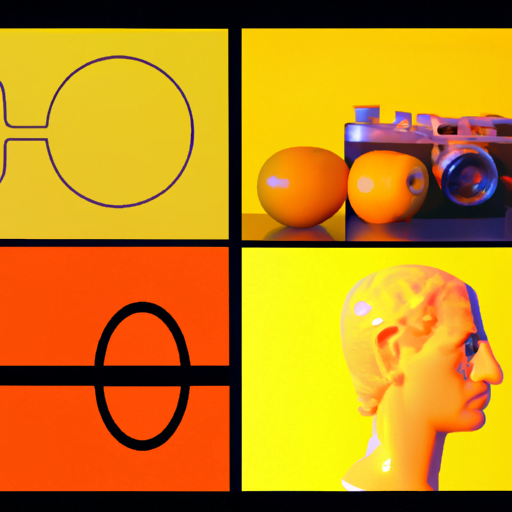
-
Table of Contents
- Understanding Gestalt Principles in Design
- What are Gestalt Principles?
- 1. The Law of Proximity
- 2. The Law of Similarity
- 3. The Law of Closure
- 4. The Law of Continuity
- 5. The Law of Figure-Ground
- Applications of Gestalt Principles in Design
- 1. Web Design
- 2. Logo Design
- 3. Product Design
- Case Studies and Statistics
- Case Study: Apple
- Statistics: User Engagement
Understanding Gestalt Principles in Design

Design is a powerful tool that can influence how we perceive and interact with the world around us. Whether it’s a website, a logo, or a product, the way it is designed can greatly impact our experience. One approach to design that has gained significant attention is the use of Gestalt principles. These principles provide a framework for understanding how our brains perceive and organize visual information. In this article, we will explore the key Gestalt principles and their applications in design, backed by relevant examples, case studies, and statistics.
What are Gestalt Principles?
Gestalt principles are a set of theories that describe how humans perceive and interpret visual information. The word “Gestalt” comes from the German word for “shape” or “form,” and these principles focus on how our brains organize visual elements into meaningful patterns and structures. By understanding these principles, designers can create more effective and engaging designs that resonate with their audience.
1. The Law of Proximity
The Law of Proximity states that objects that are close to each other are perceived as a group or a single unit. This principle suggests that elements that are physically close to each other are perceived as related or belonging together. For example, consider a website with a list of products. By placing related products close to each other, designers can create a visual hierarchy and make it easier for users to understand the relationships between different items.
2. The Law of Similarity
The Law of Similarity states that objects that share similar visual characteristics, such as shape, color, or size, are perceived as related or belonging together. This principle suggests that elements that look alike are perceived as part of the same group. For example, in a logo design, using similar colors or shapes can create a sense of unity and coherence.
3. The Law of Closure
The Law of Closure states that our brains tend to fill in missing information to perceive incomplete objects as complete. This principle suggests that our brains have a natural tendency to complete shapes or patterns that are not fully formed. For example, consider a logo design that uses negative space to create an illusion of a hidden shape. Our brains automatically fill in the missing parts, resulting in a complete and recognizable image.
4. The Law of Continuity
The Law of Continuity states that our brains prefer to perceive continuous and smooth lines or curves rather than disjointed or abrupt changes. This principle suggests that elements that are aligned or connected in a smooth manner are perceived as a single entity. For example, in a website design, using a flowing line to connect different sections can create a sense of cohesion and guide the user’s eye through the content.
5. The Law of Figure-Ground
The Law of Figure-Ground states that our brains naturally separate visual elements into a foreground (figure) and a background (ground). This principle suggests that we perceive objects as distinct from their surroundings. For example, in a poster design, using contrasting colors or shapes can help create a clear distinction between the main subject (figure) and the background.
Applications of Gestalt Principles in Design
Now that we have a basic understanding of the Gestalt principles, let’s explore how they can be applied in various design contexts.
1. Web Design
Gestalt principles play a crucial role in web design, where creating a visually appealing and user-friendly interface is essential. By applying the Law of Proximity, designers can group related elements together, making it easier for users to navigate and understand the content. The Law of Similarity can be used to create visual consistency by using consistent colors, fonts, or icons for related elements. The Law of Closure can be applied to create interactive elements that respond to user actions, such as buttons that change color when hovered over. The Law of Continuity can guide the user’s eye through the content by using flowing lines or visual cues. Finally, the Law of Figure-Ground can be used to create a clear visual hierarchy by contrasting the main content with the background.
2. Logo Design
Gestalt principles are also highly relevant in logo design, where creating a memorable and impactful brand identity is crucial. The Law of Proximity can be used to group elements that represent different aspects of the brand, creating a cohesive and meaningful logo. The Law of Similarity can be applied to create a sense of unity and coherence by using consistent colors, shapes, or patterns. The Law of Closure can be used to create hidden meanings or symbols within the logo, engaging the viewer’s curiosity. The Law of Continuity can guide the viewer’s eye through the logo, creating a sense of flow and movement. Finally, the Law of Figure-Ground can be used to create a clear distinction between the main subject and the background, ensuring that the logo stands out and is easily recognizable.
3. Product Design
Gestalt principles can also be applied in product design to enhance the user experience and improve usability. The Law of Proximity can be used to group related controls or features together, making it easier for users to understand and interact with the product. The Law of Similarity can be applied to create a consistent visual language, allowing users to quickly identify and understand different elements. The Law of Closure can be used to create intuitive and user-friendly interfaces by leveraging our brain’s tendency to complete missing information. The Law of Continuity can guide users through the product’s interface or physical form, ensuring a smooth and seamless experience. Finally, the Law of Figure-Ground can be used to create clear visual cues and affordances, helping users understand how to interact with the product.
Case Studies and Statistics
Let’s explore some real-world examples and statistics that highlight the effectiveness of applying Gestalt principles in design.
Case Study: Apple
Apple is known for its iconic and minimalist designs, which heavily rely on Gestalt principles. The company’s logo, a simple apple silhouette, utilizes the Law of Closure by leaving out unnecessary details, allowing our brains to fill in the missing parts and recognize the shape. The Law of Figure-Ground is also evident in Apple’s product designs, where the main content is visually separated from the background, creating a clear focal point. Apple’s use of the Law of Similarity can be seen in its consistent use of clean lines, rounded corners, and minimalistic color palettes across its product lineup, creating a sense of unity and coherence.
Statistics: User Engagement
Studies have shown that applying Gestalt principles in design can significantly impact user engagement and satisfaction. According to a study conducted by the Nielsen Norman Group, websites that effectively utilize the Law of Proximity and the Law of Similarity have higher user engagement and lower bounce rates. Users are more likely to stay on a website and explore its content when related elements are grouped together and visually consistent. Another study by the University of Basel found
